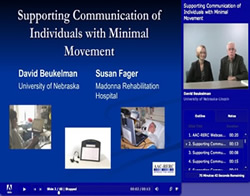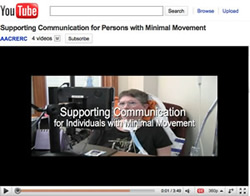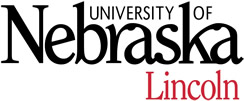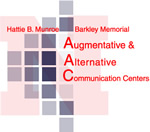May 16, 2010
For many years we have provided augmentative and alternative communication (AAC) services to people with minimal movement capability. Their medical conditions include brainstem stroke, amyotrophic lateral sclerosis, Guillan Barre’ Syndrome, and chronic myasthenia gravis.
As with others who rely on AAC, these people are multi-modal communicators in that they use high and low technology options depending upon the situation and the listener. High technology options include commercially available devices as well as technology under development.
During the past year, we have provided presentations related to our work in this area at RESNA, the World Congress on Disability, and ATIA. We would now like to share two resources based on our NIDRR-funded research and development activities.
 |
In this free webcast we use an interactive discussion format to present on new developments in AAC technology to support communication for persons with minimal movement. We provide three video case studies, as well as data on the use of AAC by people with ALS.
|
| |
|
 |
In this YouTube clip we share a demonstration of the use of eye-tracking technology to support the communication of a woman with Amyotrophic Lateral Sclerosis.
|
We hope you find these materials provide support in your work with individuals with minimal movement.
 |
Susan Fager, Ph.D. CCC/SLP
Institute for Rehabilitation Science and Engineering at Madonna Rehabilitation Hospital, Lincoln, Nebraska
|
|
 |
David R. Beukelman, Ph.D. CCC/SLP
University of Nebraska,
Lincoln Institute for Rehabilitation Science and Engineering at Madonna Rehabilitation Hospital, Lincoln, Nebraska,
Munroe-Meyer Institute,
University of Nebraska Medical Center
|

